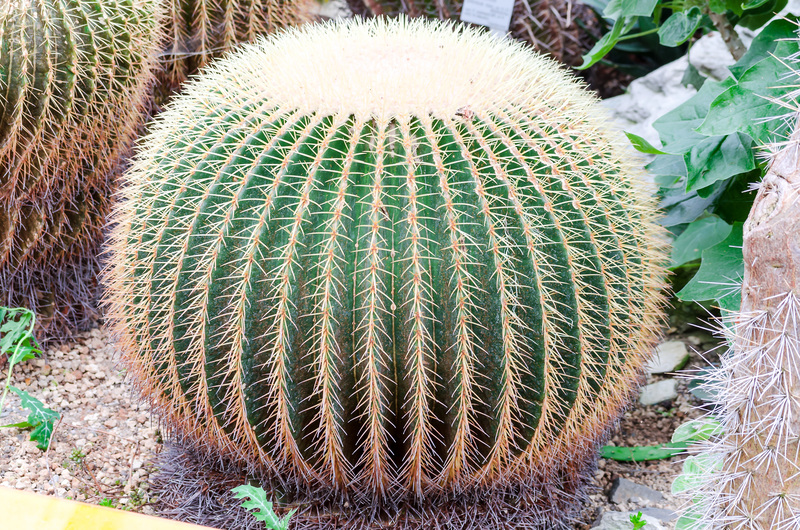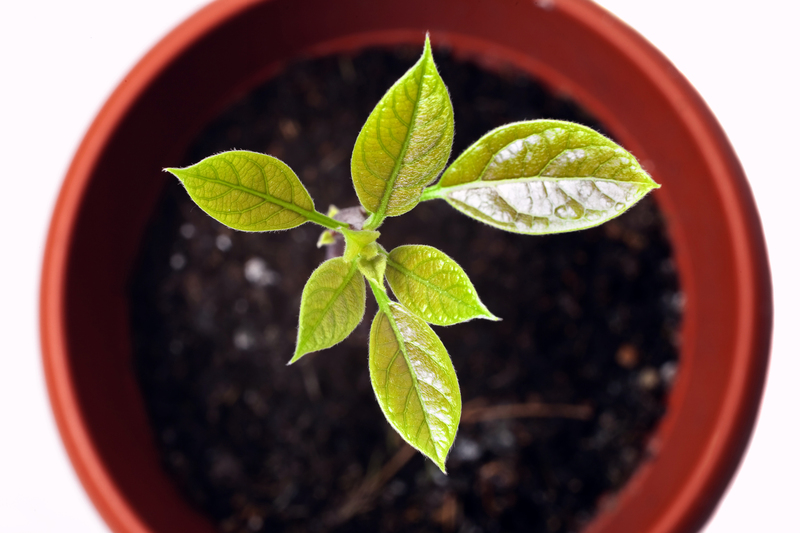Bring Life Anywhere: 3 Steps for a Moveable Garden
Gardening isn't confined to large yards or fixed spaces. With the rising trend of urban living and small-space limitations, the magic of plants can thrive even in the smallest corners of your world. A moveable garden puts the joy and health benefits of plants right at your fingertips--wherever you go. In this in-depth guide, you'll discover how to create a portable, flourishing ecosystem in three simple steps you can take anywhere--from balconies and patios to mobile homes and even indoor settings.
Why You Should Consider a Moveable Garden
A portable garden isn't just for nomads and renters. Anybody with a love for greenery and a desire for flexibility can reap its rewards:
- Adaptability: Easily relocate your plants according to season, sunlight, or your living arrangement.
- Space Optimization: Perfect for balconies, rooftops, patios, small apartments, and urban settings.
- Personalization: Design, rearrange, and curate your green sanctuary to suit your current lifestyle or mood.
- Climate Control: Move your plants indoors or outdoors to protect them from unfavorable weather changes.
- Promote Healthy Living: Enjoy fresh herbs, spectacular blooms, or crisp veggies wherever you put down roots.

Step 1: Choose the Best Containers for Your Portable Garden
Material Matters
The foundation of any mobile gardening setup is the container. Not all pots are created equal, and your choice impacts the portability, health, and style of your moveable garden.
- Plastic Pots: Lightweight, affordable, moisture-retentive, and available in countless shapes. Ideal for high-mobility gardens.
- Fabric Grow Bags: Breathable, flexible, and collapsible when empty, ensuring root health and easy storage.
- Self-Watering Planters: Invaluable for busy or forgetful gardeners, these containers ensure plants are well-hydrated during moves or travel.
- Wheeled Planters: Large containers on casters allow even sizable shrubs and trees to move effortlessly.
- Recycled Containers: Upcycled buckets, crates, or baskets can double as creative plant holders and reflect your sustainable ethos.
Size and Shape for Flexibility
Consider both the plant and your available space. For portable gardens:
- Small and Medium Containers: Help in reducing weight and simplify re-arrangement.
- Stackable or Modular Designs: Vertical gardens, tiered stands, or interlocking units maximize small spaces while adding visual interest.
- Integrated Carry Handles: Make relocation even easier, especially when your "garden" gets large.
The best containers for moveable planting blend functionality, portability, and style. Investing in quality containers up front will pay dividends as your garden travels with you.
Step 2: Select the Perfect Plants for a Portable Paradise
Creating a thriving moveable garden requires thoughtful plant selection. Choose varieties suited for container life, flexibility, and resilience under changing light and temperature conditions.
Best Choices for Mobile Greenery
- Herbs: Basil, mint, parsley, chives, thyme, and oregano flourish in pots, are lightweight, and add zest to your cooking wherever you go.
- Salad Greens: Lettuce, arugula, spinach, and kale are shallow-rooted and thrive even in window boxes and totes.
- Compact Vegetables: Cherry tomatoes, peppers, dwarf eggplants, and radishes are high yield and don't require deep soils.
- Ornamentals: Petunias, pansies, nasturtium, succulents, and small ferns offer ease of mobility and dramatic splashes of color.
- Houseplants: Snake plants, pothos, spider plants, and zz plants adapt readily to both indoor and outdoor environments.
How to Decide: Matching Plants to Spaces
Matching the plant's care requirements to your actual space and routine ensures a lush, growing garden even if you move often.
- Sun-loving Plants: If your portable garden will often be in full sun (balcony, veranda, patio), select varieties that can tolerate six or more hours of direct sunlight.
- Shade-tolerant Choices: Indoor or north-facing settings call for ferns, calathea, or herbs like mint that prefer lower light.
- Resilient Species: Opt for hardy herbs and houseplants if you travel frequently or sometimes forget to water.
- Rotational Planting: Seasonal rotation (e.g., cool-season veggies in spring/fall, heat-tolerant flowers in summer) ensures year-round vibrancy wherever your garden goes.
Pro Tip: Mix flowering plants and edible greens for a moveable garden that stimulates the senses and supports pollinators, too!
Soil and Nutrition for Portable Gardening
Quality potting mix is crucial for healthy, container-bound plants. Choose a lightweight, well-draining media formulated for potted plants; consider slow-release organic fertilizers to keep nutrition levels steady for weeks at a time. Always ensure that containers offer proper drainage to avoid root rot--essential when shifting locations.
Step 3: Arrange and Maintain Your Mobile Oasis
Creative Layouts for Small, Mobile Spaces
How you group, arrange, and display your containers turns a collection of pots into a harmonious, lush retreat--one that's as pleasing to the eye as it is simple to maintain.
- Vertical Gardens: Use stackable planters, wall systems, or shelving for upward growth--perfect for balconies or compact patios.
- Mobile Plant Carts: Rolling utility carts let you relocate entire sections of your garden with ease--indoors or out.
- Flexible Arrangements: Cluster small pots in decorative groupings and swap placements seasonally or as you move.
- Outdoor-Indoor Synergy: Design layouts you can transport inside during extreme weather or when you need to display plants indoors.
Watering on the Go
The portability of your garden depends on consistent care. For mobile success:
- Self-watering systems or water globes reduce the need for frequent attention--especially important when plants are moved or you travel.
- Group plants with similar water needs together to simplify routine and reduce risk of over- or under-watering.
- Mulch the surface of each pot to retain moisture and suppress weeds--a small effort that goes a long way in container gardens.
Seasonal Care and Mobility Tips
- Move containers according to sunlight patterns--especially helpful for maximizing growth on a changing balcony or patio layout.
- Prepare for relocations in advance: Give plants a drink before moving and, if traveling, group pots closely to conserve humidity.
- Acclimatize plants gradually when shifting between outdoors and indoors to avoid shock.
- Inspect for pests and diseases regularly, particularly after moves, to maintain your mobile garden's health.
Expert Tips for Moveable Gardening Success
- Label Your Plants: This prevents confusion during moves or re-arrangements--especially useful for herbs and seedlings.
- Use Lightweight Potting Mix: Regular garden soil is heavy; opt for mixes with coco coir, perlite, or vermiculite for much easier movement.
- Stabilize Larger Containers: Place a few stones at the bottom for stability but don't overdo it--keep containers manageable.
- Decorative Touches: Incorporate colorful pots, plant stands, or decorative rocks and tags to express personality wherever your garden travels.
Remember: Regular pruning, feeding, and cleaning will keep your garden healthy and inviting, no matter where you set down roots.
Common Mistakes to Avoid in Moveable Gardens
- Overcrowding: Don't cram too many plants per container; give roots room to breathe!
- Choosing Oversized Containers: They quickly become heavy and unwieldy. Stick to sizes you can carry or roll with ease.
- Ignoring Drainage: Always ensure adequate holes to prevent waterlogging.
- Neglecting Light Requirements: Don't assume all plants will thrive together--group them by similar needs.
- Forgetting About Wind and Weather: Portable doesn't always mean impervious; protect delicate plants before storms or cold snaps.
Moveable Garden Inspiration: Real-World Ideas
Balcony Sanctuary
Transform an urban balcony with stacked crates of herbs, marigolds, and tomatoes. Add hanging baskets at varying heights and a rolling cart of verdant salad greens. When seasons or moods change, simply shift the arrangement for a refreshed look and optimal light exposure.
Patio Veggie Cart
A 3-tiered rolling cart combines trailing petunias, pots of dwarf peppers, and containers of spring mix for daily salads. Wheel inside to protect from summer storms or out to bask in the sunlight.
Indoor Jungle
Group sansevieria, monstera, and pothos in decorative grow bags and display them on a compact mobile shelf. Rotate plants weekly to ensure even growth and quickly convert your living room into a lush retreat.

Frequently Asked Questions About Moveable Gardens
-
Can I move my garden without damaging plants?
Absolutely! Water deeply, lift containers gently (using handles where possible), and minimize disturbance to both soil and roots. -
How do I keep plants healthy during moves?
Gradual acclimatization and grouping by care needs is key, as is always ensuring sufficient light and hydration. -
What's the most portable garden setup?
Stackable or fabric containers with integrated handles offer the best flexibility, especially when filled with lightweight potting mixes and compact plants. -
Can I start a moveable garden in winter?
Yes! Indoor movable gardens thrive year-round. Just ensure adequate lighting and humidity for your chosen species.
Conclusion: Start Your Moveable Garden Adventure Today
With the actionable steps above, the dream of a moveable garden is within reach for everyone--no matter your living situation or gardening skill. Bring life anywhere by choosing the right containers, selecting plants suited for mobility, and arranging your portable paradise to match your style and needs.
Embrace flexibility. Invite beauty and health into every space you inhabit. Start your moveable gardening journey today and transform anywhere--urban apartment, rented patio, or even your office--into a lush, living work of art.
Stay in touch with the rhythms of nature and bring life anywhere--one portable plant at a time.